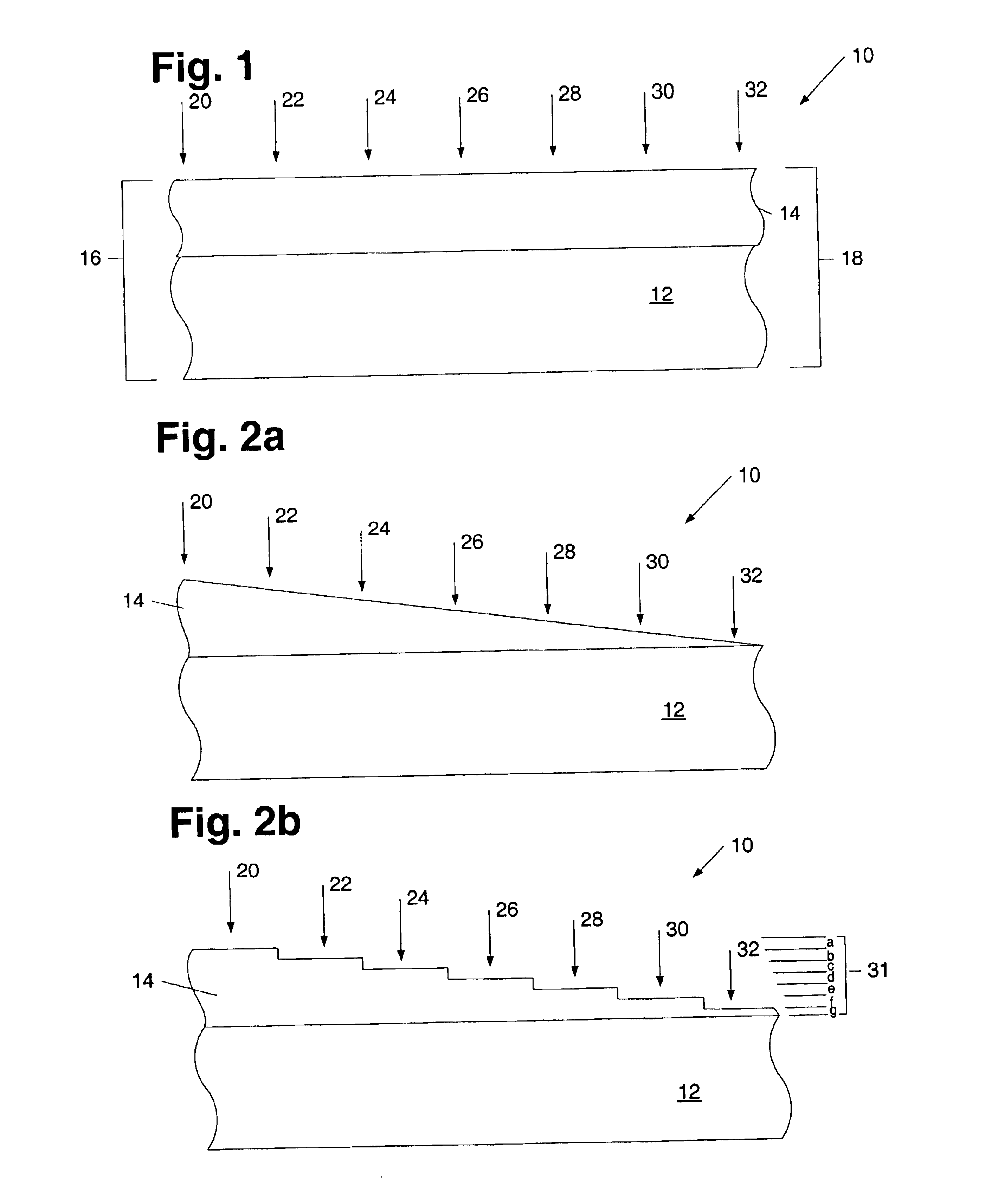Method and structure for determining a concentration profile of an impurity within a semiconductor layer
a technology of impurity concentration and semiconductor layer, applied in the direction of semiconductor/solid-state device testing/measurement, semiconductor/solid-state device details, instruments, etc., can solve the problems of reducing production efficiency and device quality, difficult to find an analytical technique suitable for use in semiconductor fabrication, and large equipment pieces, etc., to achieve accurate and timely manner, reduce process cycle time, and increase production efficiency
- Summary
- Abstract
- Description
- Claims
- Application Information
AI Technical Summary
Benefits of technology
Problems solved by technology
Method used
Image
Examples
Embodiment Construction
[0026]Turning to the drawings, exemplary embodiments of a method for measuring a concentration of an impurity within a layer of a semiconductor topography is shown in FIGS. 1-7. Moreover, FIGS. 1-7 illustrate a method for determining a concentration profile of an impurity within such a layer. In general, the arrangement of impurities within a material may differ. In particular, one or more portions of a layer may include higher concentrations of an impurity than other portions of the layer. The method described herein offers a technique by which to determine the concentration of an impurity within a particular location of a layer. In addition or alternatively, the method described herein may be used to determine the concentration profile of an impurity within a layer with a graded refractive index. In general, an impurity may refer to any species deliberately introduced into a material. In a preferred embodiment of the method described herein, the impurity may include any species ad...
PUM
 Login to View More
Login to View More Abstract
Description
Claims
Application Information
 Login to View More
Login to View More - R&D
- Intellectual Property
- Life Sciences
- Materials
- Tech Scout
- Unparalleled Data Quality
- Higher Quality Content
- 60% Fewer Hallucinations
Browse by: Latest US Patents, China's latest patents, Technical Efficacy Thesaurus, Application Domain, Technology Topic, Popular Technical Reports.
© 2025 PatSnap. All rights reserved.Legal|Privacy policy|Modern Slavery Act Transparency Statement|Sitemap|About US| Contact US: help@patsnap.com



